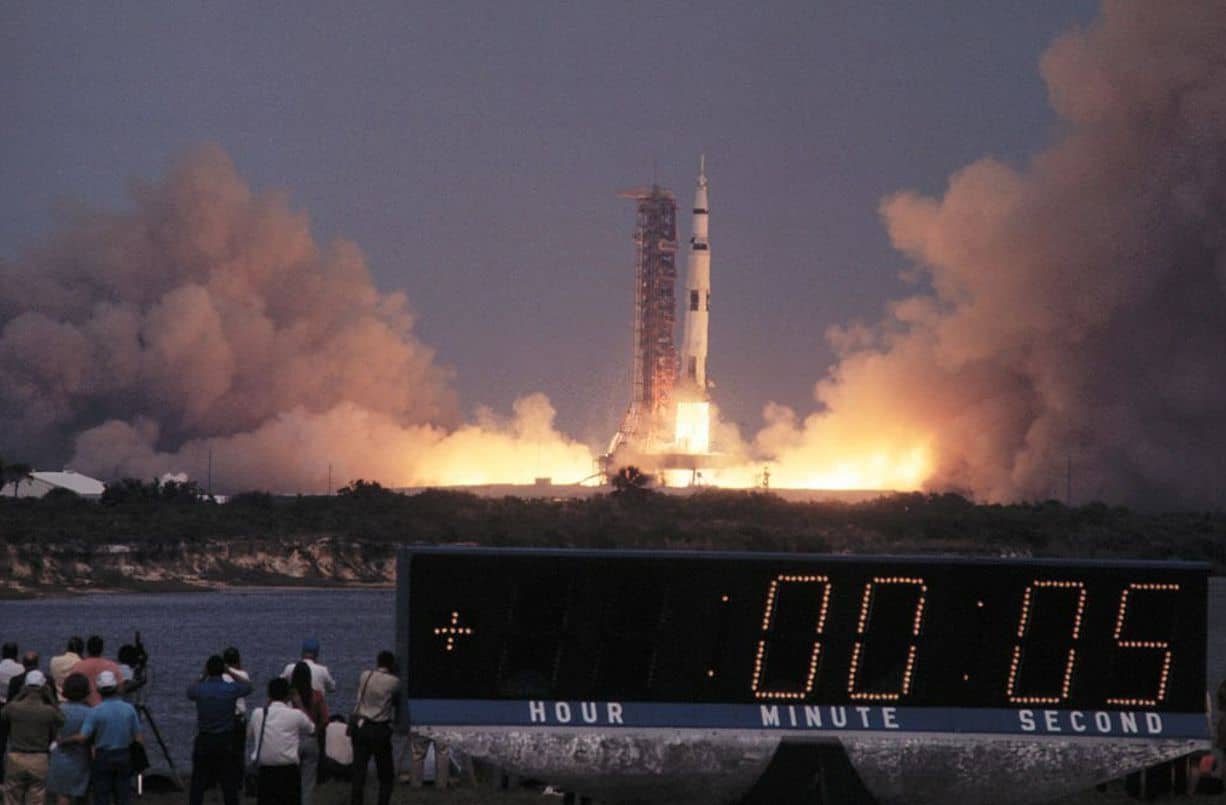History and physics-based acoustical models work together to dispel myths about the most powerful rocket ever launched.
The Saturn V, which sent people to the moon, is still the most powerful rocket ever to reach orbit. It catches the imagination, however, perhaps it could capture a little too much. There are many claims on the Internet that the rocket was so loud that it melted concrete and set the grass on fire more than a mile away.
These ideas are wrong in every way. Researchers from Brigham Young University used a model that was based on physics in order to estimate the acoustic levels that were produced by the Saturn V. Their findings were published in The Journal of the Acoustical Society of America. They found that the value should be 203 dB, which coincided with the extremely limited evidence that was available in the 1960s.
Comparatively speaking, the decibel range of commercial jet engines is between 120 to 160.
According to author Kent L. Gee of BYU, “Decibels are logarithmic, so every 10 decibels is an order of magnitude increase.”
“One hundred and seventy decibels would be equivalent to 10 aircraft engines. Two hundred would be 10,000 engines!”
Even though the Saturn V was incredibly loud, its power was insufficient to melt concrete or start a fire in the grass. If the stories about these things are true, they are probably caused by the plume or debris radiating heat out into space.
Misunderstandings can sometimes result from equating sound pressure and sound power. The former is comparable to a light bulb’s wattage. The brightness of the latter varies depending on how far away you are when viewing it. Compounding errors have also been caused by calculation errors, modifications to the decibel reference system, and the spread of false information.
“The Saturn V has taken on this sort of legendary, apocryphal status,” added Gee. “We felt that, as part of the JASA special issue on Education in Acoustics, it was an opportunity to correct misinformation about this vehicle.”
NASA’s Space Mission System (SLS) Artemis 1 launch, which will bring astronauts back to the moon and outperform the Saturn V in terms of power and noise, is set for the fall of this year. The researchers have predicted the sound levels of SLS using their framework, and they intend to take acoustical measurements at launch to enable them further hone their forecasts.
In order to share their research with physics classes at the college level, the team also supplied teaching resources, such as homework problems. The purpose of this rocket is to demonstrate the value of properly analyzing data and scientific internet conversations.
Image Credit: Getty
You were reading: A Common Misconception About The Most Powerful Rocket Launched To Date Just Corrected
